Native Americans Hunting Buffalo
Native Americans hunting buffalo had to ensure every member of the tribe got enough meat to survive. With a small tribe that wasn't generally a problem, but if several tribes lived together in a large village, it could be a challenge. Kiowas solved this problem through a technique they called holding the buffalo.
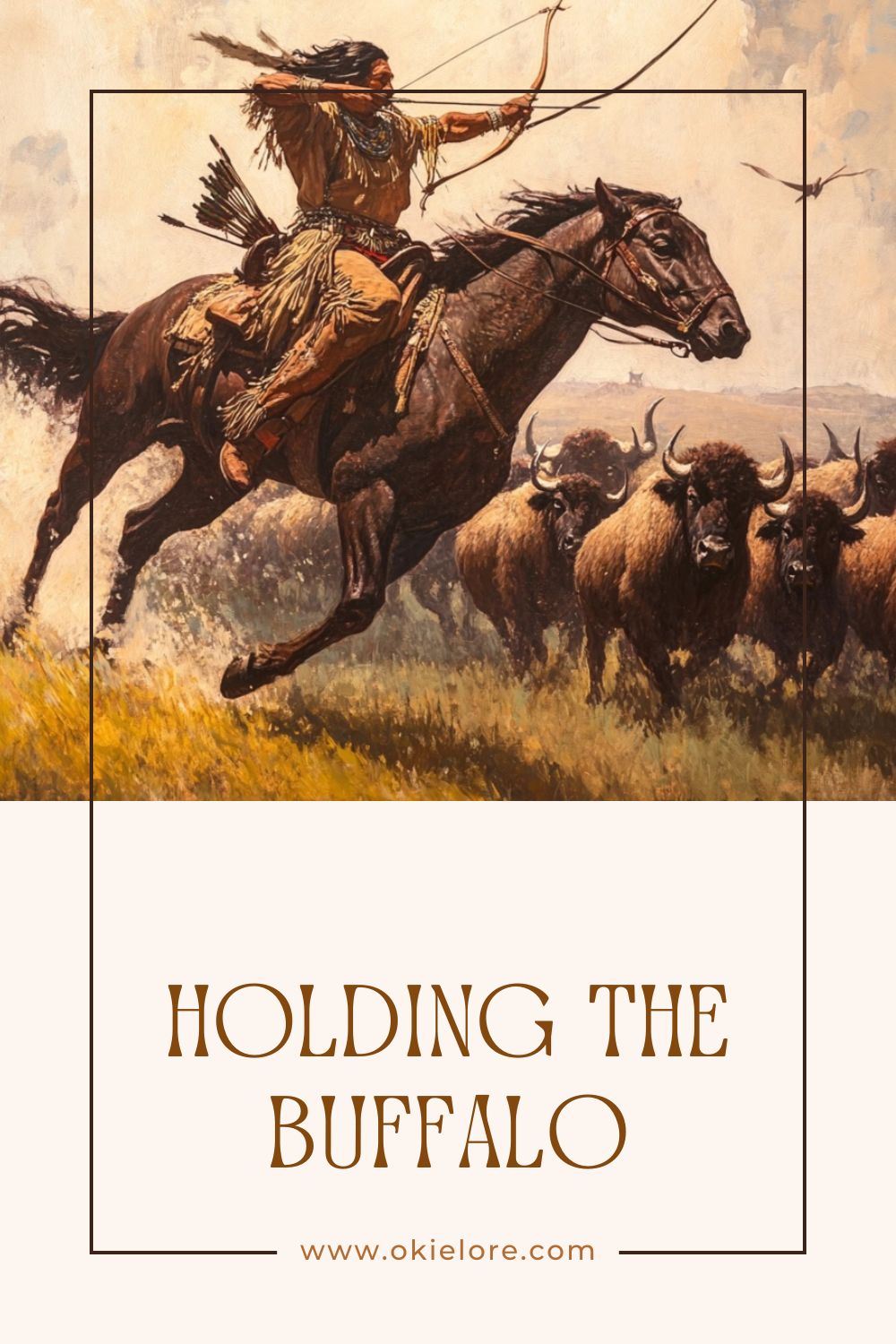
Once buffalo get spooked, they stampede and will run up to three miles before they calm down and begin to graze. Nomadic tribes liked camping next to the buffalo. If the buffalo moved, that meant members of the tribe would have to move as well, which could be a complicated process of taking down tents, packing them and then dragging everything to a new location using either dogs or women to pull them.
So instead, they would all hunt at the same time, using a stealth method of shooting them using bows and arrows to keep from spooking the entire herd. They did this about once every other week.
The rest of the time, special tribesmen were appointed to hold the buffalo.
Native Americans Hunting Buffalo
Included Holding the Buffalo
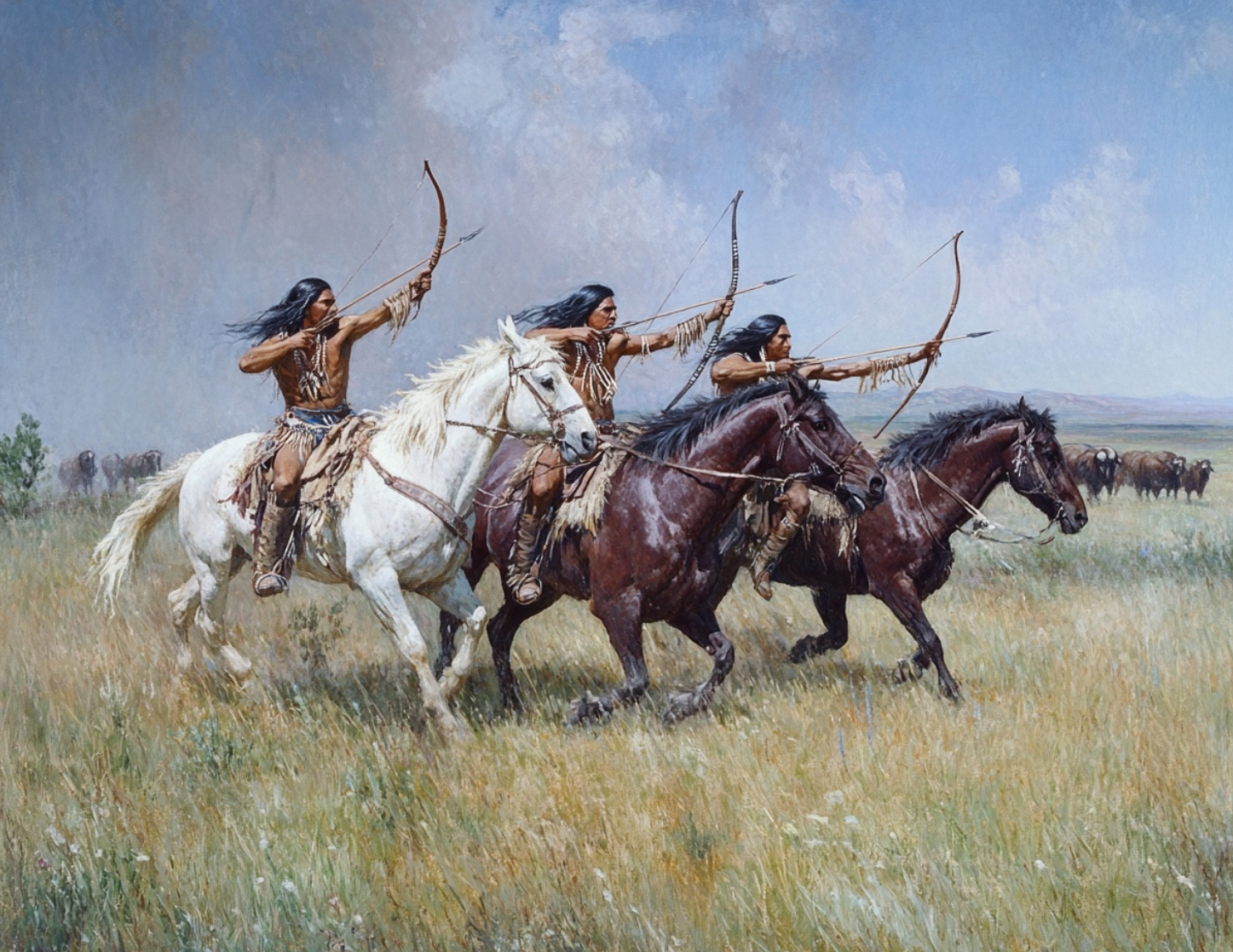
A tribal military unit would be responsible for holding the buffalo as well as protecting the tribe from enemy attacks and holding tribal ceremonies.
On a day the chief designated, all tribesmen would line up on horses carrying only a bow and arrows. Guns were not allowed as they would spook the buffalo. The military unit would make sure no one cheated by jumping the gun and going early.
Then, when the chief gave the command, they would all ride out together, shooting the buffalo quietly. They would kill enough buffalo to provide sufficient meat to last for almost two weeks. That would allow all the Native Americans hunting buffalo to get a fair chance.
Those who broke the rules and poached the buffalo by hunting at a time that was not allowed would be punished severely. He would be beaten with a whip, have his horse shot out from underneath and have his saddle and bridle cut up. Then he would be forced to walk back to the village.
How Important Was the Buffalo to the Kiowas?
The Kiowa and other nomadic tribes wouldn't survive without the buffalo. They used it for everything. When hunters killed the buffalo, they would eat the liver raw as they carved up the buffalo. They would dip the liver in gall. They would also use the gall to clear their throat when they sang for too long.
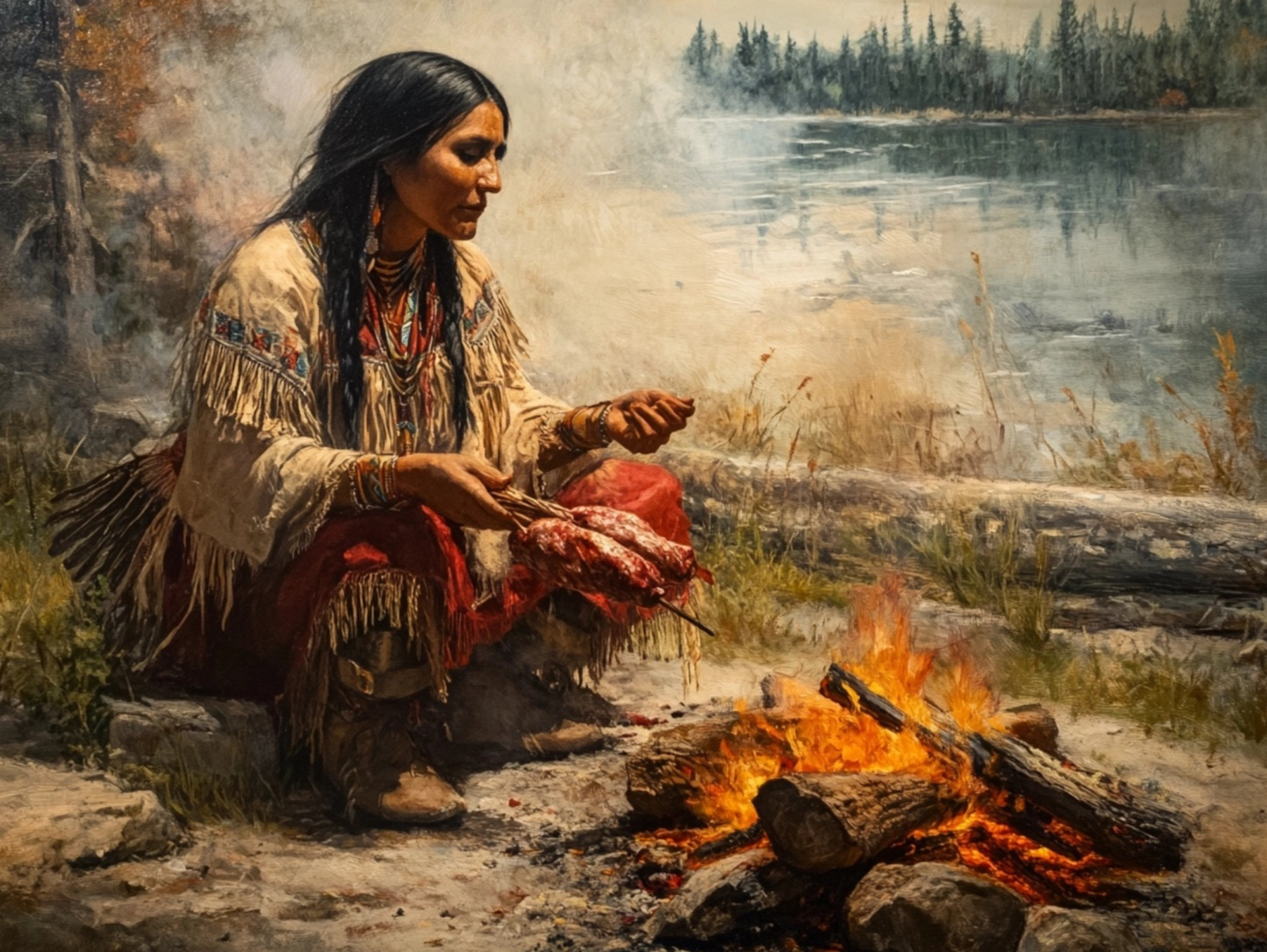
They would eat the buffalo meat by roasting it over an open fire. It would be charred on the outside and almost raw on the inside, just the way they liked it.
They would also boil the meat and eat it that way or make a soup out of it.
They would also make sausage out of the buffalo meat by pounding the meat with suet, which is the hard fat that surrounds the kidneys and loins of the buffalo. Then they'd add wild plums to give the meat more flavor. They'd stuff the buffalo's windpipe with the meat.
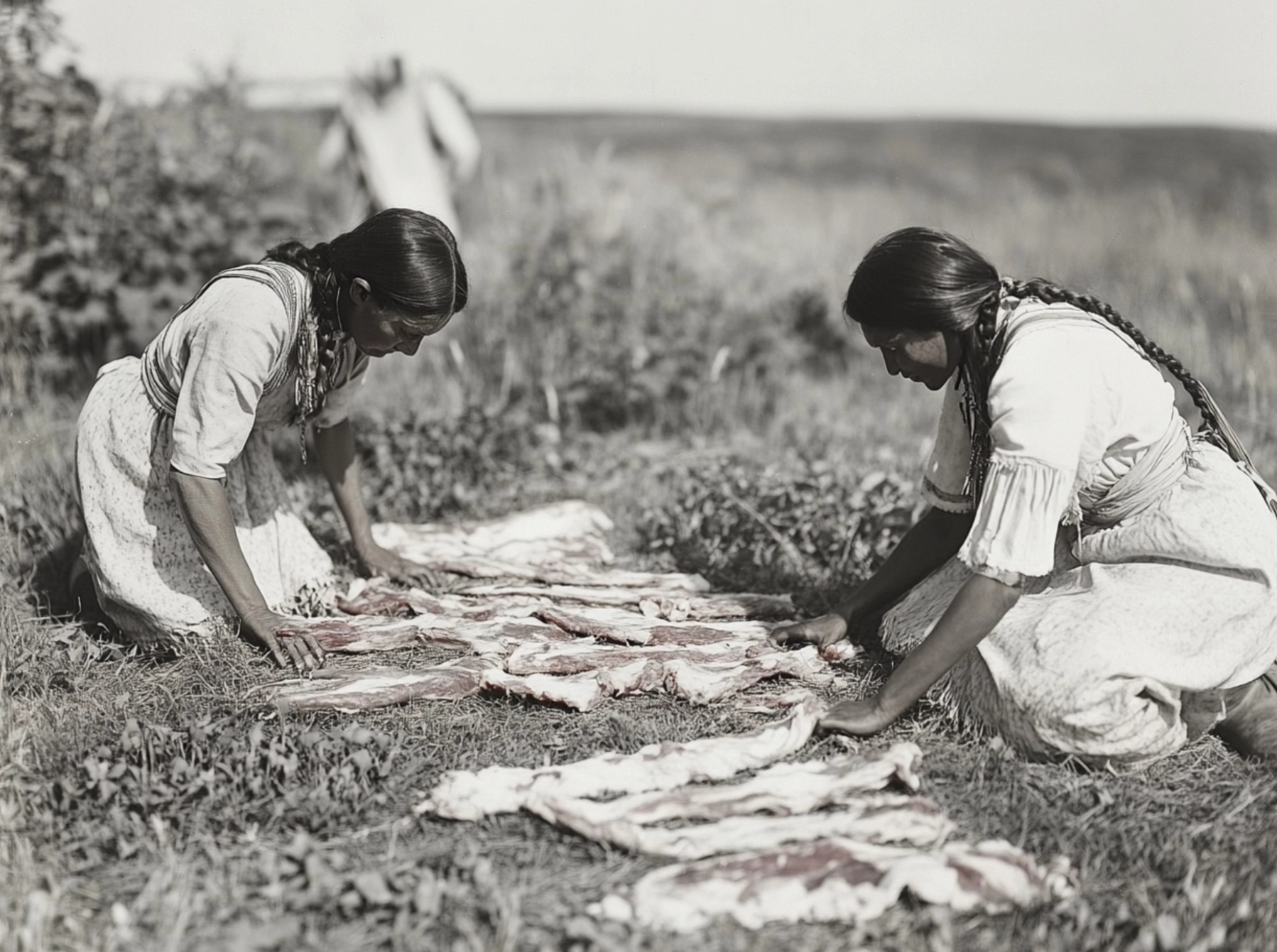
They would also dry the meat by slicing it into long, thin strips and spreading it out on the grass and letting it dry in the sun. That way, it became jerky and would last for a long time.
They would either eat the jerky as is, or they would reconstitute the jerky by boiling it in water. They could make soup that way.
They also ate the internal organs, including the brains, nose and ears of the buffalo. They considered the udders and nose to be a delicacy.
While the buffalo's meat was important, other parts of the buffalo were equally crucial to the survival of the tribespeople.
The Importance of Buffalo Hides
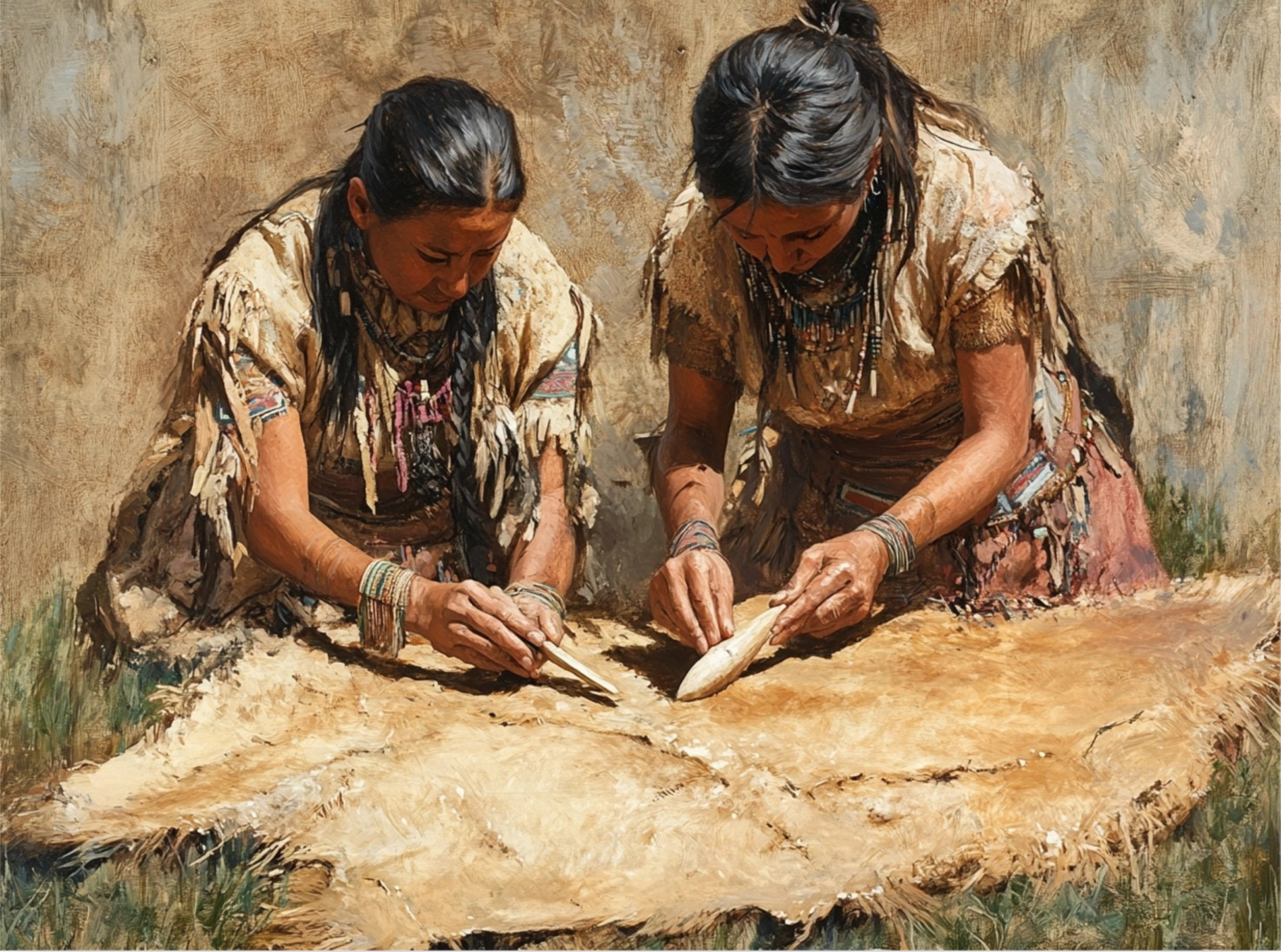
Native Americans hunting buffalo would kill these creatures for their hides as well as their meat. Women would tan the hides by staking them on the ground and then use either a sharpened rib bone or an elk horn to scrape away all of the fat, extra pieces of meat and hair.
It could be backbreaking work, but the women took pride in doing the job well. Once they removed all of the flesh, hair and fat from the hide, they'd rub a mixture of buffalo brains and liver to tan the hide.
They would use the hides for a number of purposes, including making teepees. They'd sew the hides together using sinew from the buffalo. It would take them between ten and thirty hides to make one teepee.
They also used the hides to make sweat lodges.
To make warm blankets and coats, they would keep the wool on when tanning it. They would also use the wool for stuffing pillows and padding cradles.
They would also use buffalo hides to make hats, moccasins and leggings. They would also make pouches to carry food, clothing and utensils. Women would boil a buffalo's gums, forehead and lips to make gum.
Small wonder, then, that the Kiowa called the buffalo "a gift from God."
I talk about it in the video below:
